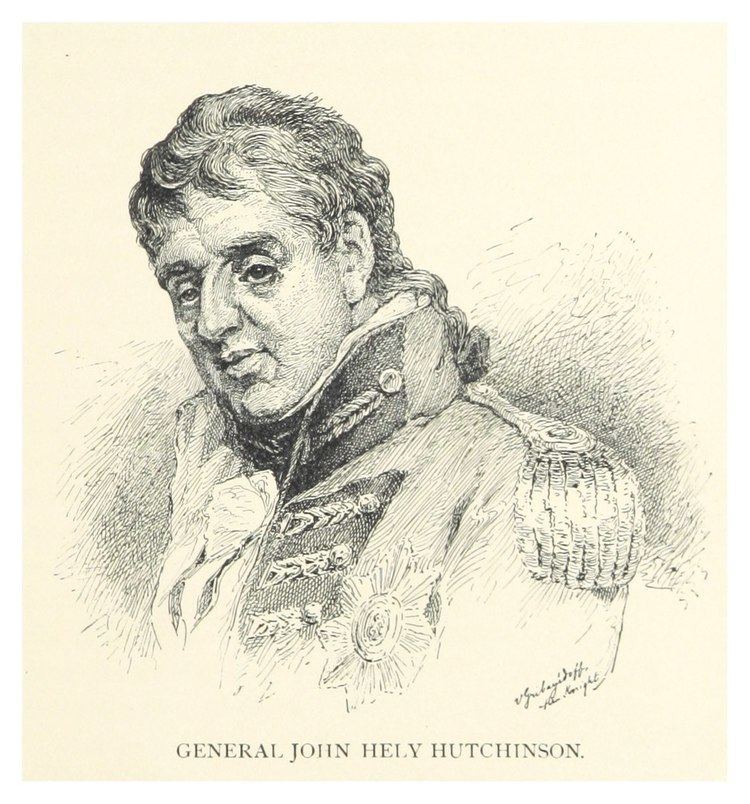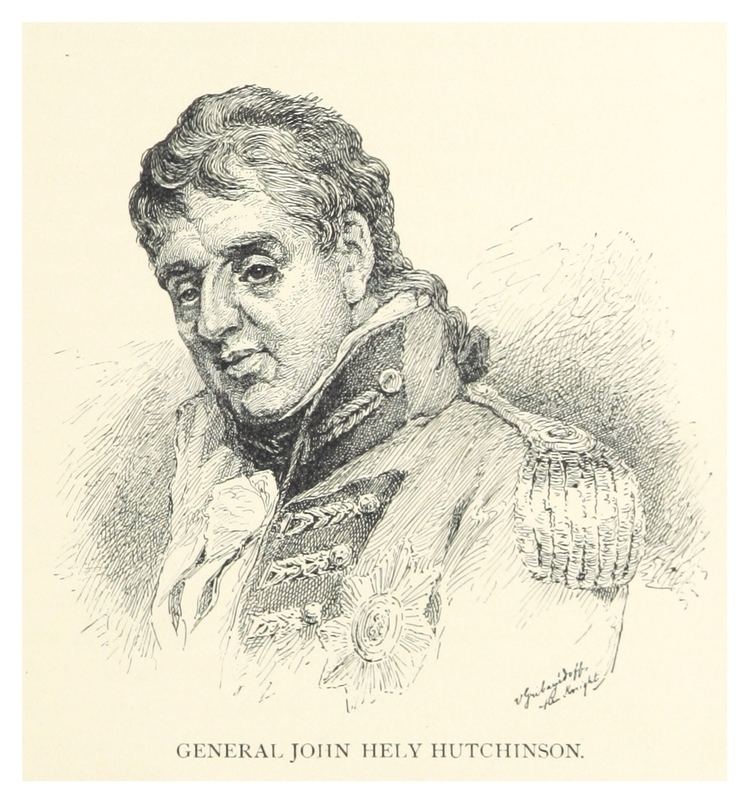Name John 2nd Role Politician | Died June 29, 1832 | |
 | ||
Similar People Ralph Abercromby, Jacques‑Francois Menou, Sidney Smith, Horatio Nelson - 1st Viscount, Napoleon | ||
General John Hely-Hutchinson, 2nd Earl of Donoughmore, GCB (15 May 1757 – 29 June 1832) was an Anglo-Irish politician, hereditary peer and soldier.
Contents

Background
He was the son of John Hely-Hutchinson and the Baroness Donoughmore. In 1801 he was created Baron Hutchinson in the Peerage of the United Kingdom (gaining a seat in the House of Lords) and later succeeded to all his brother Richard's titles. Educated at Eton, Magdalen College, Oxford, and Trinity College, Dublin. He died 29 June 1832, never having married.
Military career
He entered the Army as a Cornet in the 18th Dragoons in 1774, rising to a Lieutenant the next year. In 1776 he was promoted to become a Captain in the 67th Regiment of Foot, and a Major there in 1781. He moved regiments again in 1783, becoming a Lieutenant-Colonel in, and Colonel-Commandant of, the 77th Regiment of Foot, which was however disbanded shortly afterwards following an earlier mutiny. He spent the next 11 years on half-pay, studying military tactics in France before serving as a volunteer in the Flanders campaigns of 1793 as aide-de-camp to Sir Ralph Abercromby.
In March 1794 he obtained brevet promotion to Colonel and the Colonelcy of the old 94th Regiment of Foot and then became a Major-General in May 1796, serving in Ireland during the Irish Rebellion of 1798, where he was second-in-command at the Battle of Castlebar under General Lake. In 1799, he was in the expedition to the Netherlands.
Hely-Hutchinson was second-in-command of the 1801 expedition to Egypt, under Abercromby. Following Abercromby's death in March after being wounded at the Battle of Alexandria, Hely-Hutchinson took command of the force. From then he was able to besiege the French firstly at Cairo which capitulated in June and then besieged and took Alexandria culminating in the capitulation of over 22,000 French soldiers. In reward for his successes there, the Ottoman Sultan Selim III made him a Knight, 1st Class, of the Order of the Crescent.
In recognition of his "eminent services" during the "late glorious and successful campaign in Egypt", at the request of the King, the United Kingdom Parliament settled on Lord Hutchinson and the next two succeeding heirs male of his body an annuity of £2000 per annum, paid out of the Consolidated Fund.
He was promoted Lieutenant-General in September 1803, and made a full General in June 1813. In 1806, he became Colonel of the 57th (West Middlesex) Regiment of Foot, transferring in 1811 to be Colonel of the 18th Regiment of Foot, a position he held until his death in 1832. He also held the position of Governor of Stirling Castle from 1806 until his death.
Political career
Hely-Hutchinson sat as Member of Parliament (MP) for Lanesborough from 1776 to 1783 and for Taghmon from 1789 to 1790. Subsequently he represented Cork City in the Irish House of Commons until the Act of Union in 1801 and was then member for Cork City in the after-Union Parliament of the United Kingdom until 1802.
